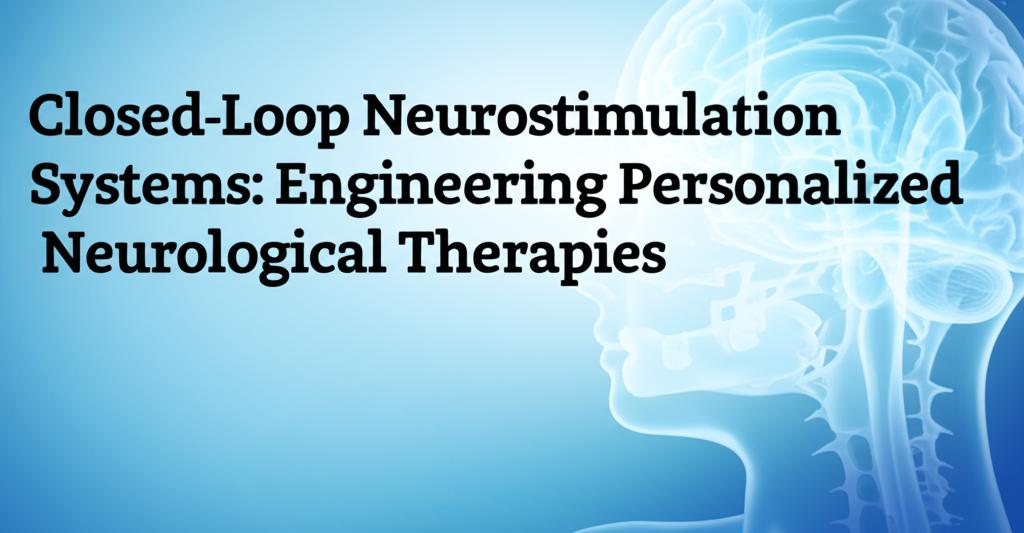Closed-loop neurostimulation systems represent a significant leap forward from traditional open-loop approaches, offering a dynamic and personalized method for treating neurological and psychiatric disorders. Unlike open-loop systems that deliver pre-programmed, constant stimulation regardless of a patient's fluctuating state, closed-loop systems function intelligently, adapting therapy in real time.
These systems operate on a feedback principle, much like a thermostat adjusts heating based on room temperature. They continuously monitor specific physiological signals, known as biomarkers, directly from the patient's nervous system. These biomarkers can range from electrical brain activity patterns (like EEG, ECoG, or local field potentials) to neurochemical concentrations (such as dopamine or serotonin) or even other physiological indicators like heart rate or muscle activity.
Sophisticated algorithms then analyze these incoming biomarker signals in real time. Based on this analysis, the system determines if and how to adjust the neurostimulation parameters – such as the intensity (amplitude), timing, frequency, or location of the electrical pulses. This allows the therapy to be automatically tailored to the individual's current needs, potentially increasing stimulation when symptoms worsen or decreasing it when not needed.
This adaptive capability offers numerous potential advantages. By delivering stimulation only when necessary and at the optimal intensity, closed-loop systems aim to improve therapeutic efficacy and achieve better symptom control compared to open-loop methods. Studies have suggested benefits in conditions like epilepsy, where responsive neurostimulation (RNS) systems detect seizure precursors and deliver stimulation to stop them, and Parkinson's disease, where adjusting deep brain stimulation (DBS) based on motor state could improve motor function management. Furthermore, this targeted approach may significantly reduce stimulation-related side effects and potentially conserve battery life in implantable devices.
Closed-loop technology is already demonstrating clinical success in areas such as epilepsy and chronic pain management through spinal cord stimulation (SCS). Research is actively exploring its application across a wider spectrum of conditions, including movement disorders like essential tremor, psychiatric illnesses such as depression, obsessive-compulsive disorder (OCD), and Tourette syndrome, as well as addiction and even experimental visual prostheses.
Despite the promise, significant engineering challenges remain. Identifying robust and reliable biomarkers that accurately reflect a patient's clinical state or specific neurological events is crucial. Developing sensors capable of long-term, stable monitoring, particularly for neurochemicals, is an ongoing area of research. Perhaps one of the most significant hurdles is managing the electrical artifacts created by the stimulation itself, which can interfere with the accurate recording of the very neural signals needed for the feedback loop. Additionally, the real-time processing of complex neural data requires computationally efficient algorithms and low-power hardware suitable for implantable or wearable devices. Ensuring the safety, reliability, and long-term biocompatibility of these sophisticated systems is paramount.
The future of closed-loop neurostimulation points towards even greater personalization and precision. Researchers are exploring the use of multiple biomarkers simultaneously for more comprehensive state assessment. Artificial intelligence and machine learning, including neuromorphic (brain-inspired) computing approaches, are being investigated to create smarter, more adaptive control algorithms capable of learning and predicting patient needs. Advances in miniaturization, wireless technology, and non-invasive stimulation methods (like transcranial electrical or magnetic stimulation) paired with sensing could lead to more accessible and user-friendly systems, potentially including wearable devices for conditions like addiction. Continued research into novel methods like optogenetics (using light to control genetically modified neurons) may offer highly specific control in experimental settings, informing future therapeutic designs.
In conclusion, closed-loop neurostimulation stands as a frontier in neurological therapy, shifting the paradigm from static interventions to dynamic, patient-specific treatments. By listening and responding to the body's own signals, these systems hold the potential to significantly improve outcomes, reduce side effects, and enhance the quality of life for individuals living with a range of challenging neurological and psychiatric conditions. While engineering hurdles persist, ongoing innovation continues to drive the development of these next-generation personalized therapies.

